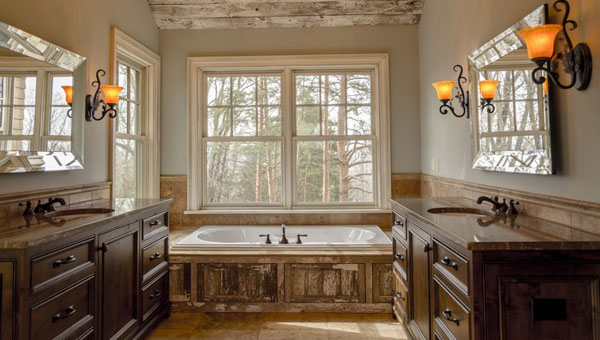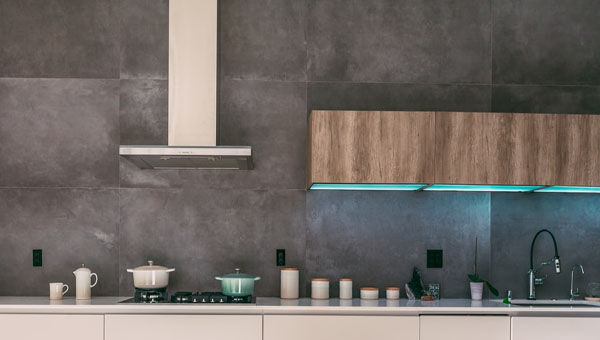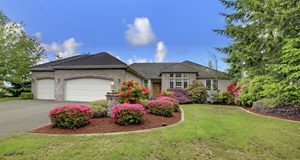By Lee Wallender
Renovation Specialist
 Your kitchen or bathroom needs countertops, but which type of material is right? Your choice of countertop materials certainly does hinge on that all-important factor: cost. Yet there are other factors to consider, some of which might become deal-breakers.
Your kitchen or bathroom needs countertops, but which type of material is right? Your choice of countertop materials certainly does hinge on that all-important factor: cost. Yet there are other factors to consider, some of which might become deal-breakers.
Do you hate maintenance? Then materials such as concrete may not be for you, since they require frequent surface sealing. Are you looking for a conversation piece? Crushed, recycled glass counters provide that unique look that gets people talking. If your wallet is thin, laminate or butcher-block wood are clear choices.
This list begins with the most economical countertop materials and works up to the priciest and most premium ones. Three cost categories are represented – low, medium, and high –with an eye toward crucial factors such as durability, style, and maintenance.
Low-Cost and Affordable Countertops
If you want an economical countertop material, you cannot go wrong with laminates, butcher-block wood, and ceramic tile.
Laminate
What it is: Laminate pre-attached to slabs, often with attached backsplashes and rolled front edges. Or, premium laminates are adhered to MDF slabs by fabricators in shops.
Durability: Low durability, as laminate can easily scratch. Laminate cannot be effectively repaired; replacement is the only option.
Price: About $45 per linear feet, installed.
Style: Lower end laminate poorly resembles stone. Solid colors are where laminate really shines.
Maintenance: Prevent hot items from singeing the laminate. Above all, do not cut or abrade the laminate. Laminate’s top wear layer does a fine job of warding off sharp items, but it does not last forever.
Pros: Extreme low cost, especially if you decide to install the laminate yourself. Even professionally installed laminate counters are cost effective.
Cons: Laminate counters have a low resale value, since they are rarely prized by homebuyers. More expensive high-definition laminates may clear the bar with homebuyers, though.3
Wood
What it is: Butcher block countertops.
Durability: Wood is soft and forgiving and can last for decades, as long as you keep it coated.
Price Range: As low as $23 per linear foot, self-installed, for countertops of the type purchased at IKEA. Custom wood counters rank as premium and pricey.
Style: If you like the look of natural wood, this is for you. Wood counters will always look like wood. It is not possible to paint wood kitchen counters.
Maintenance: You can sand out scratches and coat the surface with tung oil or citrus-based coatings. Water is the bane of wood counters’ existence. Never let water stand for long on wood countertops.
Pros: Wood countertops are easy for homeowners to install by themselves. No special fabrication tools are needed.
Cons: Wood counters’ open grain is notorious for harboring bacteria when not properly sealed.
Ceramic Tile
What it is: Ceramic or porcelain tiles from 4 inches to 12 inches square, mortared and grouted to a backer board base.
Durability: Tile counters can last for decades, but grout chipping and tile cracking are their weaknesses.
Price Range: $60 per linear foot, installed. Price drops dramatically when self-installed and can go as low as $10 per linear foot.
Style: Tile counters have an infinite range of styles. Any tile can be installed, as long as it has a non-porous, flat surface.
Maintenance: Tile counter owners need to keep the grout clean, entailing scrubbing with toothbrushes. Tile can crack when impacted by a heavy object, but damaged tiles can be individually removed and replaced.
Pros: Tile counters can be installed by the homeowner, thus saving on labor charges.
Cons: Seams make life more difficult for the cook, as the surface is not flat. Since few homebuyers view tile countertops as valuable, they have poor resale value.
Mid-Range Cost Countertops
Medium-cost countertop materials straddle a comfortable area between affordability and value.
Stone Tile
What it is: Stone tile is an economy nod toward slab stone. These are natural honed stone tiles with rectified edges are installed edge-to-edge with tight seams.
Durability: Medium durability, as these tiles can easily crack.
Price Range: $40 to $80 per linear foot, installed.
Style: Stone tile counters look remarkably like slab stone counters, at least from a distance. Upon close examination, you see the seams and realize that this is tile, not slab.
Maintenance: Thinset grout must be regularly sealed, though epoxy grout does not need this. Extremely hot objects have been known to singe granite tiles, though this is not common.
Pros: These tiles are the perfect solution for the person who wants a slab granite counter but not at slab costs. It can be a stop-gap solution if you are temporarily low on funds and really want slab granite counters.
Cons: Even though the seams are thin, they are still there. Also, like ceramic tile counters, many homebuyers view stone tile counters are a cheap, cop-out alternative to real slab stone counters, giving these counters poor resale value.6
Solid Surface
What it is: Solid surface is a slurry of minerals and resins bonded into solid slabs that can be cut and fabricated. Corian is a prime example of a solid surface countertop.
Durability: Very durable, but lighter color solid surfaces can stain. This impact-resistant surface is nearly impossible to crack. It has more of the forgiving “bounce” of a wood countertop than the glass-shattering hardness of a slab granite or quartz countertop.
Price Range: $120 per linear foot, installed.
Style: Solid surface can resemble stone, though it lacks the depth that real stone or even quartz have. Solid surface has more of a soft, “plastic” feel than does quartz or real stone.
Maintenance: Scratches can be sanded out with fine sandpaper rated at 220 grain or greater.
Pros: Solid surface hits the sweet spot of economy plus style, equaling homeowner satisfaction and decent resale value. If you are at loose ends, solid surface is a good default countertop choice.
Cons: Solid surface counter materials have a homogenous appearance. They lack the dramatic veining of real stone and the grain and whorls of natural wood.
Recycled Glass
What it is: Crushed glass embedded in acrylic or concrete and formed into slabs.
Durability: Hard and highly durable, much like quartz counters.
Price Range: $70 per linear foot, installed. Recycled glass counters straddle the medium-to-premium cost zones.
Style: Fantastically eye-catching with a busy pattern, like granite. The difference is that recycled glass counters can have brightly colored particles that reflect their origins as post-consumer recycled bottles.
Maintenance: Cement-based glass counters need frequent resealing; acrylic-based counters do not.
Pros: Eco-friendly and unique, recycled glass counters are real conversation pieces.
Cons: Recycled glass counters can crack or chip.
Premium, Expensive Countertop Materials
High-end countertop materials are long-term, legacy choices that are all about maximum beauty and value, with a corresponding maximum price tag.
Quartz (Engineered Stone)
What it is: This mixture of ground stone products and resins (66% mineral / 33% polymer content) is a close doppelganger for real stone. Quartz is considered the go-to premium countertop choice today.
Durability: Quartz countertops are excellent at resisting stains and scratches because they are virtually non-porous – a claim that few other materials can make. Quartz countertops can be expected to last for twenty years or more.
Price Range: $140 to $200 per linear foot, installed.
Style: Most quartz counters resemble natural stone, but solid black and white are popular, as well. Quartz has more of a visual depth than solid surface has, but less than natural stone.
Maintenance: Quartz wipes down with soft cloth and non-abrasive cleaner.
Pros: Its non-porosity makes it stand out from nearly all other countertop materials, making it easy to maintain and keep clean.
Cons: Besides the high price tag, quartz counters do have seams between the slabs.
Slab Granite
 What it is: Granite slab is the real stuff. Granite is sliced from quarries in large slabs, cut to size, and honed to a shiny surface.
What it is: Granite slab is the real stuff. Granite is sliced from quarries in large slabs, cut to size, and honed to a shiny surface.
Durability: Granite is hard and resistant to scratches, but its porosity means it needs sealing. If it cracks, the crack can be filled but will probably be visible.
Price Range: $150 per linear foot, installed.
Style: Granite has an unmistakable depth and visual texture that announces that this is real stone. Owners value its three-dimensional visual quality.
Maintenance: Granite must be heavily sealed upon installation, then this sealing continues at least two times a year for the entire life of the product.
Pros: Natural slab granite’s beauty transcends style trends.
Cons: When an unsealed countertop is stained with wine, juice, or oil, the stain is permanent.
Concrete
What it is: Concrete poured into forms to create slabs, then sealed. While it may seem that concrete counters are an easy DIY project, most are professionally created and installed, thus pushing it into the premium category.
Durability: Concrete counters are highly durable and can last for decades, as long as its Achilles Heel (the sealed surface) is maintained. When the sealant is gone, stains quickly penetrate. Concrete cannot burn, melt, or singe.
Price Range: $180 per linear foot, installed.
Style: Concrete can be colorized or, more popularly, it can have the gray, edgy-urban look of what it is: natural concrete.
Maintenance: Concrete counters need frequent resealing.
Pros: Concrete is one of the few truly seamless countertops you can buy.
Cons: Concrete’s surface is prone to staining and spotting.
Summary
Choosing the right type of countertop material is partially about cost, but also factors in durability, style, and maintenance.
Lee Wallender began remodeling homes when he transformed a World War I-era farmhouse into a comfortable new home. He has been writing about home remodeling on About Home Renovations since 2006.
 Pride News Canada's Leader In African Canadian & Caribbean News, Views & Lifestyle
Pride News Canada's Leader In African Canadian & Caribbean News, Views & Lifestyle







